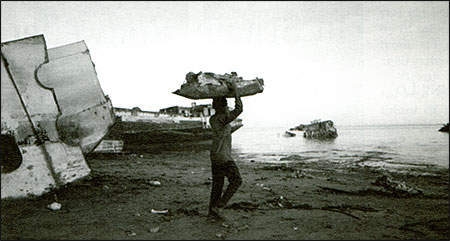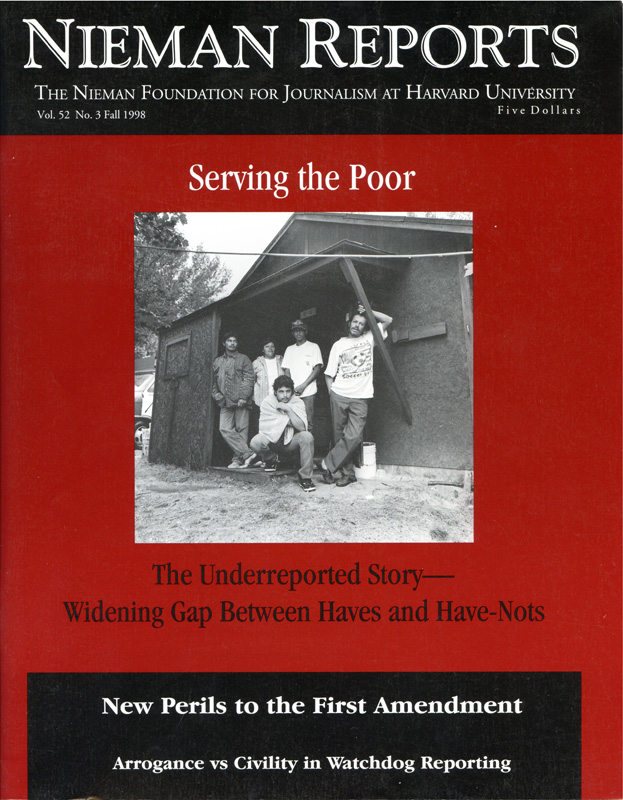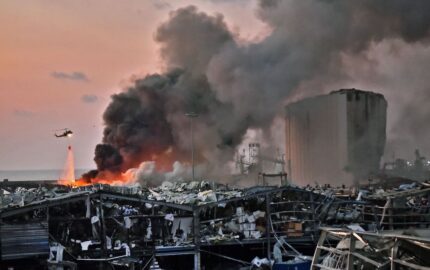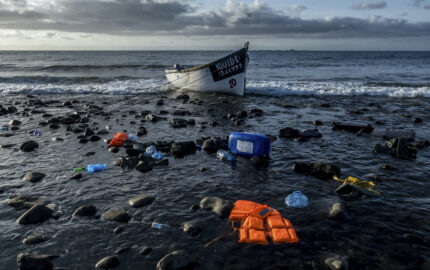
In India, workers look like ants next to the giant ships being dismantled. Photo by Perry Thorsvik, The Baltimore Sun.
Years ago I confronted the president of the Baltimore City Council, by then already besieged by subpoenas and investigators, and demanded his reaction to allegations that we planned to publish the next day. He responded by inviting me to leave before he punched me in the mouth.
Ruffled and self-righteous, I walked out with the feeling that I had given him his fair chance and, well, to hell with him. But over the next few days it began to dawn on me that I really had no idea how he perceived the extortion accusations that were swirling around him—and that this was especially unfortunate, because there was hardly anyone in Baltimore more garrulous and entertaining than this particular politician.
In the years that followed, that moment of regret slowly crystallized into a more general observation: as a rule, the bad guys are more interesting than the good guys. It pays to talk to them and to listen to them. It makes the story better.
From 1991 to 1995 I worked in The Sun’s Moscow Bureau, along with my wife, Kathy Lally. Being a foreign correspondent, particularly in a country as idiosyncratic as Russia, is great training in the art of listening. Reporters tend to be rude and abrupt when they think they already know what’s going on—but in Russia you almost never know what’s going on. You have to cast assumptions aside and listen to what good guys, bad guys and all those in between—are really saying, because they never say what you expect.
In 1996, back in Baltimore, I was paired up with reporter Gary Cohn to find out what happens when old ships, especially old warships, are sold for scrap. I had already done enough reporting to realize that it is a dirty, dangerous and virtually unregulated industry, but I doubt if I’ve ever been asked to pursue a more arcane topic. I’m not sure I realized it at the time, but since then I’ve come to understand how lucky we were that we knew so little. Ignorance was a blessing.
It meant we had to learn all sorts of things. It meant we were unburdened by assumptions. It meant we had to appeal to all kinds of people for help in understanding the industry—workers, ex-workers, regulators, Navy people, shipbuilders, speculators, contractors, lawyers, managers, owners.
One buyer and seller of old ships learned what we were up to and sent us a letter threatening legal action if we wrote about him. We sent him a letter right back thanking him for his interest and confirming that we were indeed trying to comprehend the world of shipbreaking—and that we would be grateful if he could share his insights with us. Within a week we were having lunch.
We talked to others, as well, who might traditionally have been considered “targets” of the newspaper’s investigation. Gradually it became evident that we could write a hard-hitting but superficial story with cardboard villains, or we could write one that would be just as hard-hitting but have far greater depth and nuance to it. The people who were responsible for the industry—and for everything that was wrong with it—were also the people who knew the most about it. We were only doing ourselves a favor by taking them seriously.
One scrap-yard owner with whom we met several times had a tendency to begin every conversation by venting his anger at the world in general and at newspaper reporters in particular. It would have been easy to provoke him into saying something nasty, quotable, self-destructive and possibly even self-revealing. But Gary and I had agreed we wanted to try to see the world through this man’s eyes. And the really useful information had a way of coming out about an hour or two into the interview. What we got from him was not inflammatory, but it was honest. And by showing him that we actually cared about what he had to say, we kept the lines open and knew we could always get back to him as further questions arose.
The third and final article in our series (published in The Sun in December 1997) was about the shipbreaking industry at a place called Alang, in India, where more vessels are cut up for scrap than anywhere else in the world, and where 35,000 migrant laborers, living in hovels on the beach with no running water or even latrines, toil day in and day out on the disposal of the industrial world’s discarded merchant and naval ships.
Workers at Alang are killed in explosions, in falls, by fire, by drowning, by disease. A conservative estimate puts the death toll at about one a day, but nobody really knows because nobody keeps track.
We had heard that after a particularly deadly accident an Australian television crew had shown up at Alang, but had been denied access and essentially chased away by the local police. If it was a question of a Western confrontational style running up against Asian sensibilities, it is not difficult to imagine what happened, and why.
So, before we went to Alang, Gary flew to London, where he spent a week getting to know the brokers who sell ships to India. We hired a former journalist in New Delhi, Sharmila Chandra. She preceded us to Alang, speaking with owners, port officials, the lone struggling lawyer who battles on behalf of the workers. The contacts that Gary and Sharmila made proved invaluable. In the end, no one refused to see us in Alang. In the tight-knit world of the yard owners (there are 135 independent shipbreaking outfits there), where everyone knew where we had been and with whom we had talked, not a single door was closed to us.
We engaged in the most round-about conversations. We drank gallons of tea. We were careful to show respect to our hosts. They responded by telling us what we wanted to know and giving us unfettered access to their yards. Sun photographer Perry Thorsvik brought back astonishing pictures of half-demolished ships sitting in the oily muck, of workers in rags straining in agony as they lifted heavy plates, or tossing asbestos insulation into the sea, or dodging showers of sparks and choking fumes, protected only by filthy scarves.
It took time, of course. Patience was what made our series possible. Altogether, two of us spent 18 months putting three articles together. But I believe those articles present a truer and deeper understanding of an industry that has gone badly awry—and better lay the groundwork for reform of that industry—than any attempt we could have made to go out and “get” someone. Listening, empathy and a certain persistence took us much further than confrontation, provocation or bullying ever could have.

In India, a worker, carrying a load of ship insulation on his head, walks to the water’s edge where he will dump it. The insulation came from the old U.S. Navy warship U.S.S. Bennington. Photo by Perry Thorsvik, The Baltimore Sun.
 Will Englund, 44, has been with The Baltimore Sun since 1977. As a local reporter he covered City Hall and education. In 1988 he worked for The Glasgow Herald in Scotland as a Fulbright Fellow. From 1991 to 1995 he and his wife, Kathy Lally, were assigned to Moscow as correspondents for The Sun. In 1997 he teamed up with Gary Cohn to write a series on the scrapping of old ships. It won a Pulitzer Prize for investigative reporting. In late 1997 he and his wife returned to Moscow to begin another tour there. A native of Pleasantville, N.Y., he graduated from Harvard and earned a master’s degree from Columbia University.
Will Englund, 44, has been with The Baltimore Sun since 1977. As a local reporter he covered City Hall and education. In 1988 he worked for The Glasgow Herald in Scotland as a Fulbright Fellow. From 1991 to 1995 he and his wife, Kathy Lally, were assigned to Moscow as correspondents for The Sun. In 1997 he teamed up with Gary Cohn to write a series on the scrapping of old ships. It won a Pulitzer Prize for investigative reporting. In late 1997 he and his wife returned to Moscow to begin another tour there. A native of Pleasantville, N.Y., he graduated from Harvard and earned a master’s degree from Columbia University.



